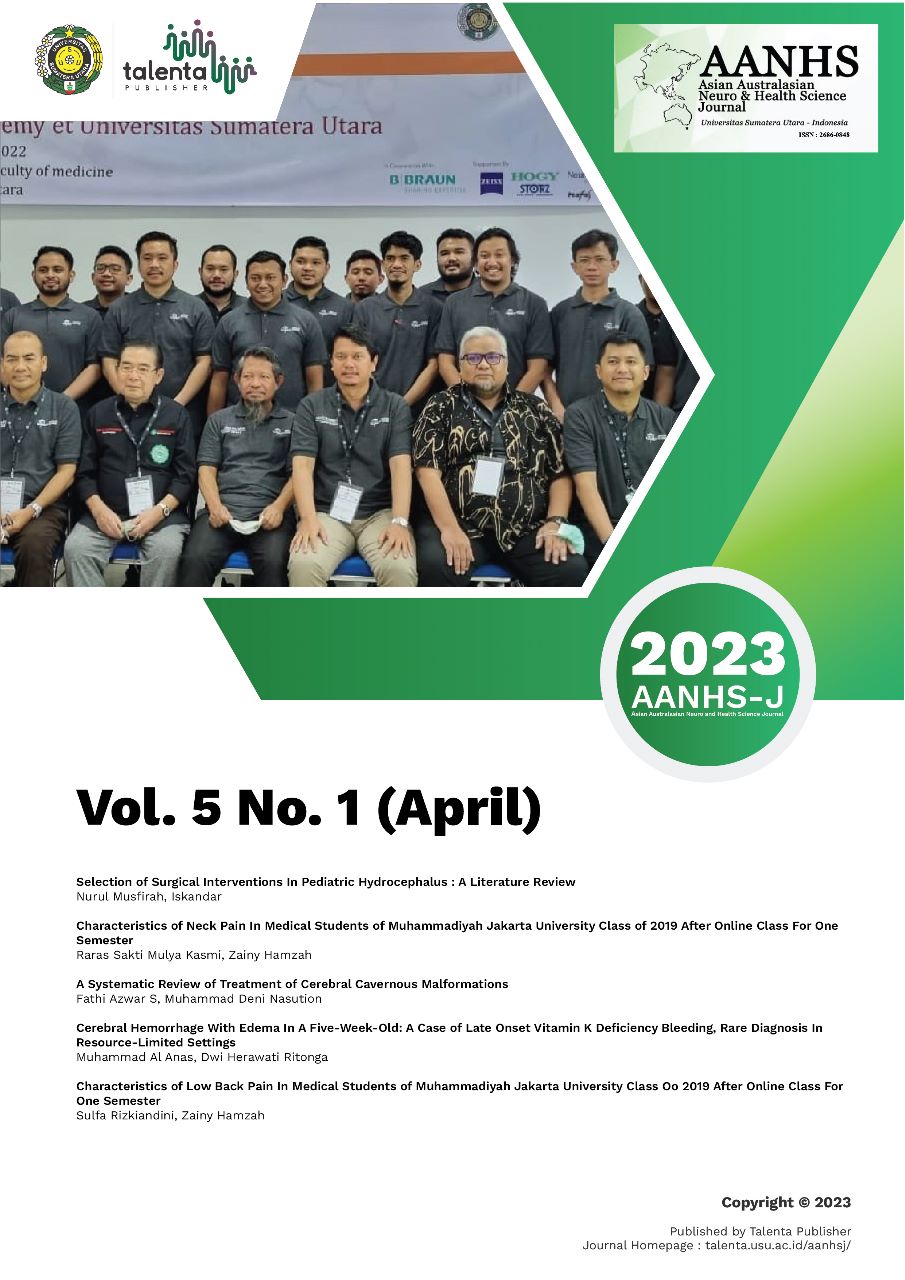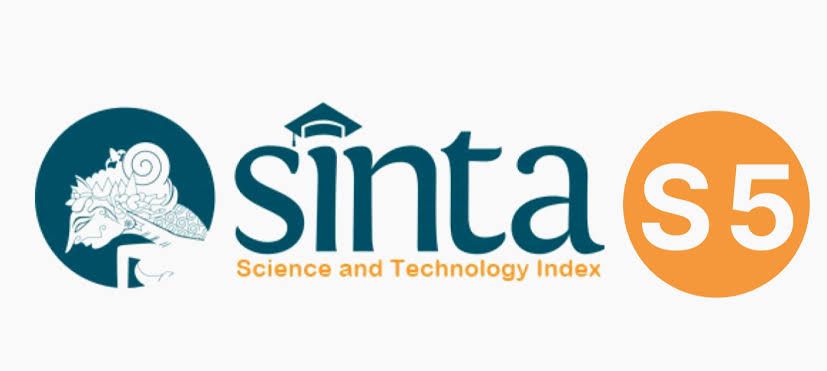A Selection of Surgical Interventions in Pediatric Hydrocephalus
A Literature Review
DOI:
https://doi.org/10.32734/aanhsj.v5i1.11101Keywords:
Hydrocephalus Pediatric, Surgical intervention, ETV, VP-Shunt, CPCAbstract
Introduction: Hydrocephalus is a condition in which the flow of cerebrospinal fluid is disturbed due to an imbalance between production and reabsorption or because there are obstacles along its distribution channel. The most common surgical intervention and standard strategy for treating hydrocephalus in recent years has been the placement of a shunt, particularly a ventriculoperitoneal shunt (VP-Shunt). In addition to shunt placement, endoscopic third ventriculostomy (ETV) and choroid plexus coagulation (CPC) are currently being performed simultaneously, considering that the combination of the two procedures is sufficient to provide maximum results and can even reduce the risk of failure.
Method: The method of literature review is used in this study.The method chosen is preferred reporting items for systematic reviews and meta-analyses (PRISMA), which involves selecting the characteristics of literature through electronic media with database searches through the PubMed and Google Scholar sites. Patients diagnosed with hydrocephalus, both communicative and noncommunicative, with an age of 18 years; surgical intervention with a Vp-shunt; EVT with or without CPC; and a 3-month follow-up were the inclusion criteria.
Result: There were 1,251 samples included in the 10 articles in this study, 7 of these articles had samples with non-communicable hydrocephalus, with the most common etiologies being post-infection and hemorrhage. The selected interventions, both Vp-Shunt and ETV with or without CPC, have a high percentage of success rates, with an average age of intervention in this study of  6 months.
Conclusion: The choice of intervention in cases of hydrocephalus should be based on patient characteristics. Installation of a shunt, ETV, or ETV/CPC may et he first choice based on the etiology of the hydrocephalus, the patient’s age, and a risk assessment that takes into account the complications that may arise from the selected procedureDownloads
Downloads
Published
How to Cite
Issue
Section
License
Copyright (c) 2023 Asian Australasian Neuro and Health Science Journal (AANHS-J)

This work is licensed under a Creative Commons Attribution-NonCommercial-ShareAlike 4.0 International License.
The Authors submitting a manuscript do understand that if the manuscript was accepted for publication, the copyright of the article shall be assigned to AANHS Journal.
The copyright encompasses exclusive rights to reproduce and deliver the article in all forms and media. The reproduction of any part of this journal, its storage in databases and its transmission by any form or media will be allowed only with a written permission from Asian Australasian Neuro and Health Science Journal (AANHSJ).
The Copyright Transfer Form can be downloaded here.
The Copyright form should be signed originally and sent to the Editorial Office in the form of original mail or scanned document.














